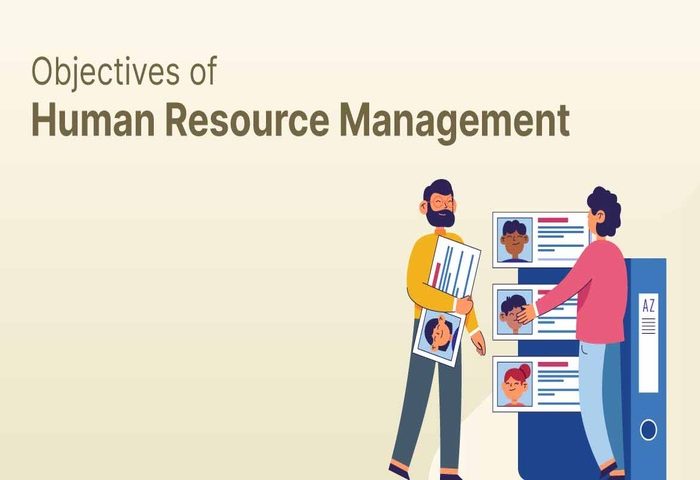The way that people spend their time at work has evolved along with the way that people work worldwide. Employee demands have also evolved. At the forefront of everything is technology. As companies work to increase productivity and efficiency, the use of HRM software is expected to grow significantly in the future. The worker must continuously upskill in order to remain relevant in the market as roles become more specialized.
Concept of Human Resource Management
The administration of human resources is simply referred to as human resource management. Human Resource Management is referred to as HRM. In order to carry out the tasks necessary to accomplish organizational goals, human resource management usually refers to the engagement, development, and retention of adequately qualified personnel.
Maintaining appropriate levels of productivity by making sure the right individuals with the correct talents have the proper job positions inside the company is the primary goal of human resource management. The effective use of people to achieve organizational and specialized goals is the main goal of human resource management. This covers the payroll function (keeping the employee data linked to employee payments) as well as people (i.e., employing employees and maintaining employee information). Selecting an HR management strategy that supports your company’s objectives and culture, is economical, and offers a satisfying work environment is crucial. Human resource management encompasses a variety of tasks, such as managerial, advisory, and human resource planning.
10 Key Objectives of Human Resource Management
1 Organizational Goals
One way to achieve competence and boost productivity in organizational work is through human resource management. As a result, achieving organizational objectives continues to be its top priority. It must help organizations by defining and accomplishing well-defined goals. In addition to achieving organizational objectives, human resource management outlines the main issues that need to be resolved and controls regulations and deadlines Through hiring, training, and employing staff efficiently, it creates organizational efficacy. Additionally, by fostering employee confidence in a constructive manner, which is at the forefront of effective individual and group performance, it should enhance the service that the firm offers to society.
2. Practical Goals
Coordination and harmonious operation both within and across departments are the responsibility of human resource management. The resources are arranged to accomplish corporate goals. Additionally, it must be ensured that human resources are well utilized and growing. Effective labor utilization should be the goal of human resource management through appropriate organizational sector guidance. Making wise choices about staff associations, training and development, assessment, rewards, recruiting, and human resource planning that are dependable and support the business plan is one way to increase the environment for effective results.
3. Individual Goals
The increased worldwide competitiveness has made it more difficult than ever for businesses to find and retain qualified employees. Add to it the shortage of employees with the necessary skills. Hiring and developing the best personnel thus becomes an indisputable priority for human resource management. It should be made sure that everyone in the organization respects one another and that their requirements are met. The organization’s strategic goals must align with HR strategies, policies, and personal development ideals. In order to achieve maximum productivity and gain a competitive edge, it should satisfy each employee’s own goals so that organizational and personal goals can coincide.
4. Social Goals
Human resource management must be in charge of making sure that social, ethical, and legal concerns are appropriately addressed. It must ensure that human resources are handled formally and legally and that their needs are understood and met. It should also take social responsibility and societal ethics into account. By contributing morally to the needs and issues that society is facing, it must also attempt to strengthen the organization’s competitive edge through social tactics. Equal opportunity and equal pay are two legal concerns that are part of society’s goals and should be taken seriously.
5. Reach Organizational Objectives
Setting and achieving goals is one of HRM’s objectives. These goals include payroll processing, employee onboarding, staff management, and workforce management, among others. Without clear guidelines for each procedure, things may quickly deteriorate. Manual procedures also provide challenges. No one should spend their time entering data into Excel sheets or registers as the number of employees increases. By automating these procedures, HR professionals may devote more time to decision-making.
6. Integration of the Team
The team integration process is crucial for every company since it shapes the framework for the teamwork. Integration can be challenging since it expects team members to come together and build mutual trust and dependability. Team integration depends much on HR since they are in charge of defining the goals of HRM and ensuring that everyone is in line. Human resources have to help team members also fit their new roles. A self-service portal or another efficient HR solution can help HR staff members and employees to interact.
7. Empowerment of Employees
Workforce empowerment—that is, creating an environment in which employees feel valued, motivated, and engaged in their work—is absolutely essential for human resource management. HR is very important in creating this environment by means of policies and processes supporting employee growth, provision of learning and training possibilities, and encouragement of an open and cooperative culture. Giving them access to tools like the ESS portal can also save HR time and effort. HRM can minimize turnover rates, boost job satisfaction, and increase productivity. All things considered, companies which wish to attract and retain top employees, stimulate creativity, and flourish over the long run have to give staff empowerment top importance.
8. Retention of Employees
Human resource management (HRM) depends nowadays on strategies for keeping staff members. HR managers have to develop effective retention plans if they are to ensure that their businesses can attract and retain excellent personnel. Common elements of such strategies are regular performance assessments, competitive compensation and benefits packages, programs for constant training and development, and an environment that welcomes honest comments and open communication. By giving employee retention first priority, HR managers can improve organizational performance, assemble a more stable and productive workforce, and finally succeed over time.
9. Data management and compliance
Crucially important elements of human resource management are data management and compliance. As HR manager or professional, your responsibility is to ensure the payroll compliance of the business; failing this could result in fines or penalties. Consider the policies and customs related to payroll and hiring before acting. Although keeping people in mind, a competent HR team will make decisions in line with corporate goals. Making decisions should be done with the utmost degree of accuracy since bad decisions or computations could have negative results.
10. A Culture of Health and Happiness at Work
The foundation of a good workplace is establishing a cooperative and motivating work environment in which staff members feel valued, appreciated, and inspired to help the firm to reach its goals. Establishing a good workplace culture depends much on HRM experts developing policies, programs, and initiatives supporting employee engagement, work-life balance, and professional growth.


